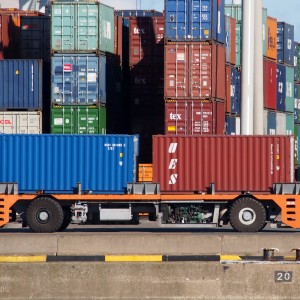Automation May Make ILA USMX Negotiations Contentious
 The current East and Gulf Coast labor contract between the International Longshore Association (ILA) and the United States Maritime Alliance, Ltd. (USMX) expires next year. While shippers and the rest of the supply chain are hoping for smooth–even early–negotiations, a news story this week highlights an issue of contention between the parties.
The current East and Gulf Coast labor contract between the International Longshore Association (ILA) and the United States Maritime Alliance, Ltd. (USMX) expires next year. While shippers and the rest of the supply chain are hoping for smooth–even early–negotiations, a news story this week highlights an issue of contention between the parties.
The ILA hit the Port of Charleston with a surprise labor slowdown on Friday that caused the port to extend gate hours this week to cope with the results reported Reynolds Hutchins in the Journal of Commerce (JOC):
The work slowdown at the Wando terminal was orchestrated by the International Longshoremen’s Association local mechanics union in response to a new automated gate system that was implemented at the terminal last summer and is in the very early stages of testing at the nearby North Charleston terminal.
…
Last Friday, a day before the port authority began testing the AGS technology at the North Charleston Terminal, union workers refused to use the new automated gate system technology at Wando Welch, forcing truck drivers to stop for manual chassis inspections. The port authority told JOC.com that by 2 p.pm. local time the port authority had managed to clear the backlog of truck traffic that had mounted at the terminal, but apparently “issues” may have remained.
Longshore unions in the U.S., both the ILA and International Longshore & Warehouse Union (ILWU), have long fought hard against automation for the fear of losing jobs. While technology moves forward and the unions have had to make concessions, their fight has had its effectiveness.
U.S. ports are behind other ports around the world when it comes to modernization and utilization of new technology for efficiency. For one such example, you can check out this Flexport blog comparing the Port of Rotterdam to the Port of Oakland.
To be fair, the Port of Rotterdam is one of the most automated ports in the world and is much larger that the Port of Oakland, which is certainly not the most technologically advanced and automated port in the U.S. However, the blog does say “if the Port of Oakland were to implement a modern level of automation, 40-50% of the [port’s union jobs] would be eliminated.”
While I think that estimation is too high, it does highlight the longshoremen unions’ vested interest in fighting automation.
It is no surprise then that the JOC article above quoted goes on to say, “Automation at terminal gates has emerged as a top ILA concern.”
Of course, U.S. ports have a vested interest in automation to increase efficiency and fight port congestion, which has become a bigger and bigger problem in recent years with the combination of carrier alliances and larger container ships significantly increasing the volume of shipping containers arriving at ports at a single time.
The reduction of seemingly more common labor slowdowns and shutdowns at the ports also has to be an attractive benefit of automation to the ports’ management.
Just this month, a terminal at the Port of Oakland was shutdown because hundreds of union workers refused to accept shifts in protest of President Donald Trump’s inauguration.
The ILA and ILWU are powerful enough to slow and stop U.S. ports over political issues or labor disputes as shippers well know.
Slowdowns and full out strikes to shutdown ports have long been tools utilized by the unions when it comes time to negotiate contracts. As a policy, the unions do not extend negotiate contracts early in order to preserve these weapons of leverage.
I don’t need to do much reminding of the 2014/2015 contentious contract negotiations between the ILWU and PMA that has everyone involved in the supply chain urging the parties to start the next negotiations long before the current contract expires.
When the labor slowdowns and retaliatory mini-lockouts of that labor strife caused agricultural exports to rot on the docks and imports to never reach store shelves for the holiday season, shippers looked to move their cargo through other ports.
At that time, the USMX and ILA talked of opening contract negotiations long before next year’s expiration, sparking excitement that there may be change to the costly way things are done at the ports.
However, movement toward that early negotiation has not happened over the last couple years. Their talk of early negotiations now feels more like a grab at cargo market share.
Negotiations between the ILA and USMX on the East and Gulf Coasts has not been much better than the ILWU/PMA negotiations on the West Coast. The last time the ILA contract expired, the ILA scheduled a strike that threatened to shut down ports around Christmas time in 2012.
History and last week’s labor slowdown give shippers more reason to expect contentious and costly contract negotiations between the ILA and USMX next year rather than a smooth transition to a new or extended contract at East and Gulf Coast ports. Under the contention will be a fight over automation.
That automation fight could prove very costly for shippers and the U.S. economy as a whole if the ILA and USMX don’t do better than we’ve seen in the past at coming to agreement.




